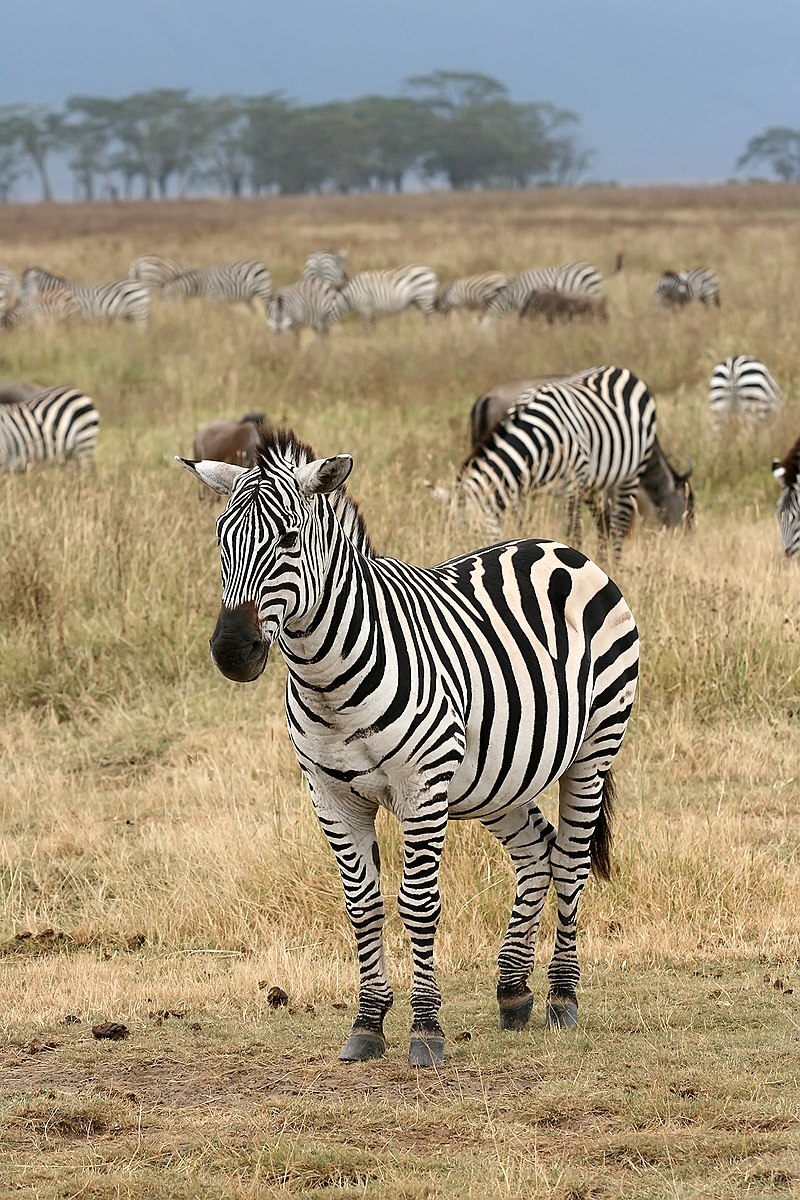

Zebras are African equines with distinctive black-and-white striped coats. Their dazzling stripes make them among the most recognizable mammals. Historically, they have been highly sought after by exotic animal collectors, but unlike horses and donkeys, zebras have never been truly domesticated. In addition to the three living species, some fossil zebras and relatives have also been identified. Zebras have been kept in captivity since at least the Roman Empire. In later times, captive zebras have been shipped around the world, often for diplomatic reasons. Continue reading
Scientists Have Discovered How Zebra Stripes Work SciTech Daily - March 17, 2023
Findings reveal that the strong black-white contrast and small dark patches in zebra fur are particularly effective in deterring horsefly attacks. These specific characteristics eliminate the outline of large monochrome dark areas that are attractive to horseflies at close range.
How the horse became the only living animal with a single toe The Guardian - August 23, 2017
They can reach speeds of more than 40km an hour, clear hurdles more than eight feet high and even pirouette – and they manage it all with just one toe on each foot. Now researchers say they have unpicked how and why horses ended up with their unusual extremities.
The only living animals with a single toe, equines (such as horses and zebras) had ancestors with multiple digits on their feet, with early relatives having four on their front feet and three on their back. While it has long been thought that the shift was linked to horses moving from forest to grassland environments, it was unclear how this anatomical change happened. Now researchers say they have cracked the conundrum.
Zebra cousin went extinct 100 years ago. Now, it's back CNN - January 27, 2016
Never heard of the quagga? You're not alone. The animal, a relative of the zebra, went extinct over 100 years ago. Now, a group of scientists outside of Cape Town are bringing it back. Like zebras, the quagga has stripes, though these only appear on the front half of their bodies. Unlike the zebra, they are brown along the rear half of their body. These animals used to roam South Africa in vast herds, but European settlers fixed the beasts in their sights, killing them at an alarming rate. By the 1880s, the last known example had died. Now, however, scientists have bred an animal that looks strikingly similar with the help of DNA and selective breeding.
Explanation for Why Zebras Have Stripes Just Got More Complicated NBC - January 14, 2015
Researchers found that striping patterns were most highly correlated with temperature: Generally, the warmer the climate, the more stripes found on the zebra.
Scientists solve the riddle of zebras' stripes: Those pesky bugs Science Daily - April 1, 2014
Why zebras have black and white stripes is a question that has intrigued scientists and spectators for centuries. The scientists found that biting flies, including horseflies and tsetse flies, are the evolutionary driver for zebra's stripes. Experimental work had previously shown that such flies tend to avoid black-and-white striped surfaces, but many other hypotheses for zebra stripes have been proposed since Alfred Russel Wallace and Charles Darwin debated the problem 120 years ago.

Horses - About, Symbolism, Healing, Astronomy, News, Akhal-Teke, Fossils